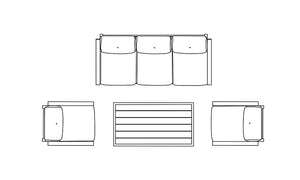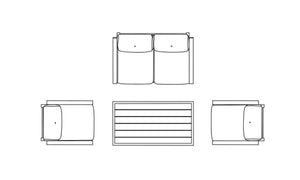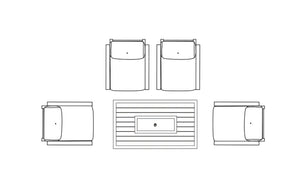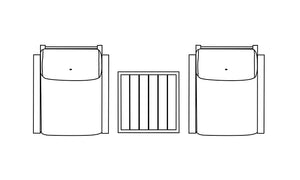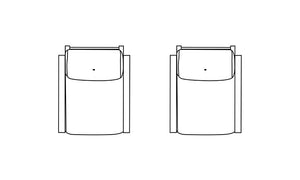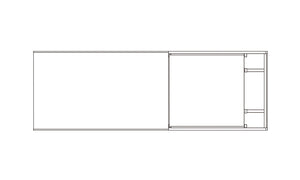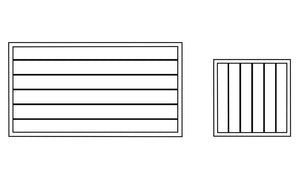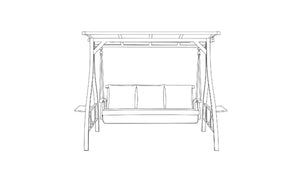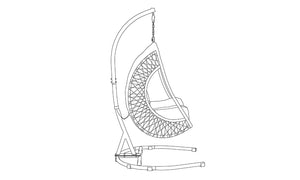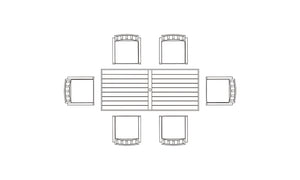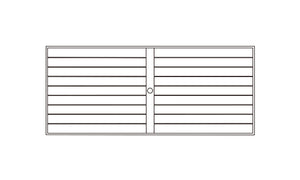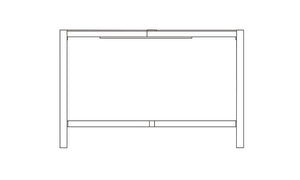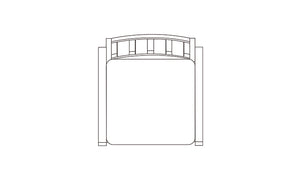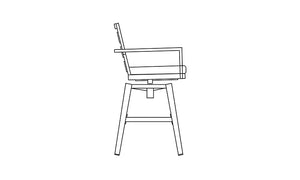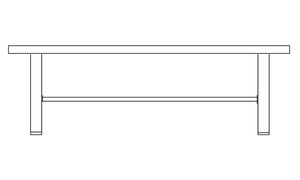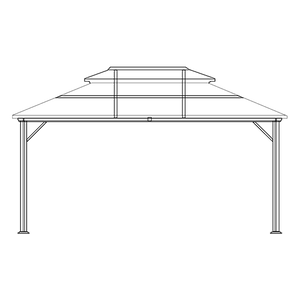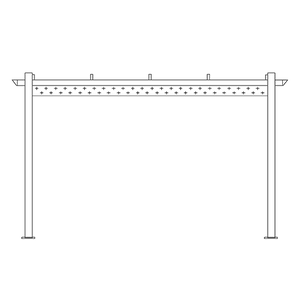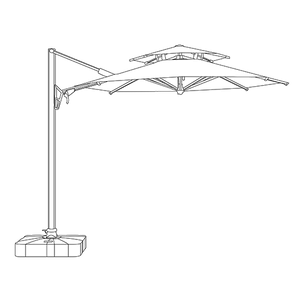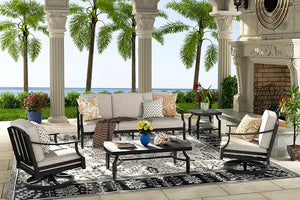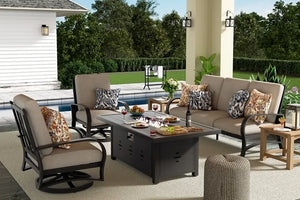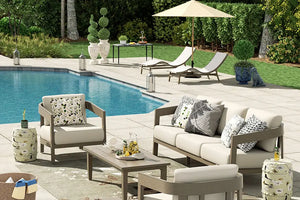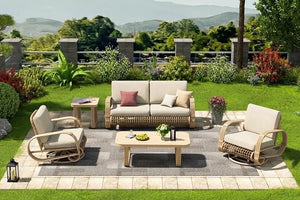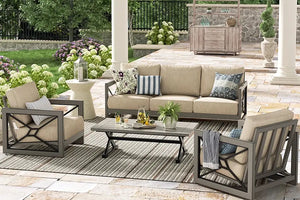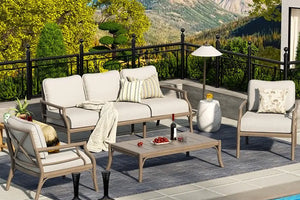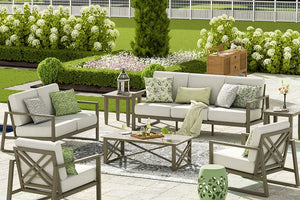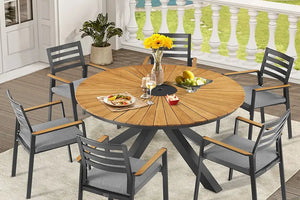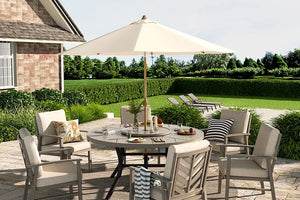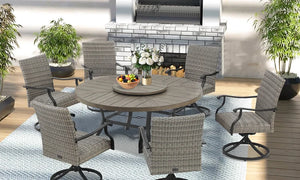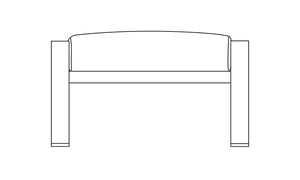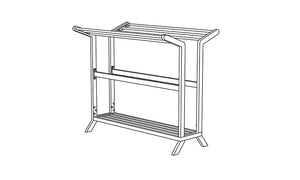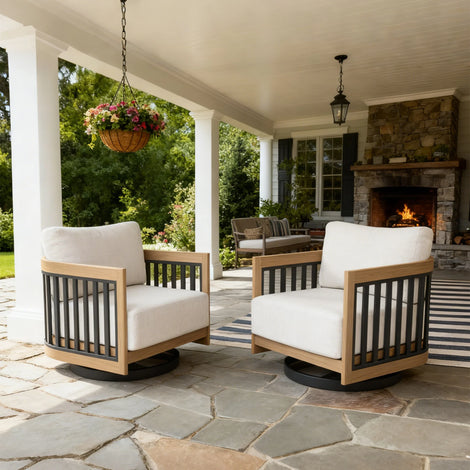Overview
Designing for the outdoor furniture is tough. Your furniture braves UV rays, torrential rains, frost-to-heat transitions, bird droppings, tree sap, dirt, leaves, the occasional spilled food or drink and everyday adventures with nature’s unpredictability.
With this in mind, leveraging cutting-edge material science, we’ve engineered superior product that withstand these challenges—yet even the finest craftsmanship thrives with proper care to prolong the life.
Tips to Protect & Care for Your Furniture
- If relocating or moving, remove all items inside and outside of unit that can fall, break or cause damage, including adjustable shelves. Then lift or roll furniture and move to new location. Do not drag or pull.
- Periodically rotate accessories on furniture so they do not sit in the same spot all the time.
- Use pads, cloth or felt to protect the furniture surface from plastic, rubber, hot dishes, beverages, bookends, flowepots & vases.
- Clean up spills immediately, using a blotting rather than wiping action, as water left over a long period of time will cause white spots in the finish. Alcohol, perfume, after-shave & medications can cause severe finish damage.
- Use a protective pad when writing on the furniture surface.
- Lift & place objects rather than dragging them across the furniture surface.
- Use cutting boards and trivets for food preparation in order to avoid damaging the top for the unit.
- Avoid placing furniture directly under windows.
- Cushion and Pillow
- Mesh Sling Fabric
- Aluminum Furniture
- Metal Furniture
- HDPE Wicker Furniture
- Quick Dry Foam Padded
- Sintered Stone Furniture
- Faux Wood & Marble Furniture
- Teak Furniture
- Polyester Rope Furniture
- Patio Umbrella
- Pergola & Gazebo
- Coastal Customers
- Outdoor FurnitureStorage
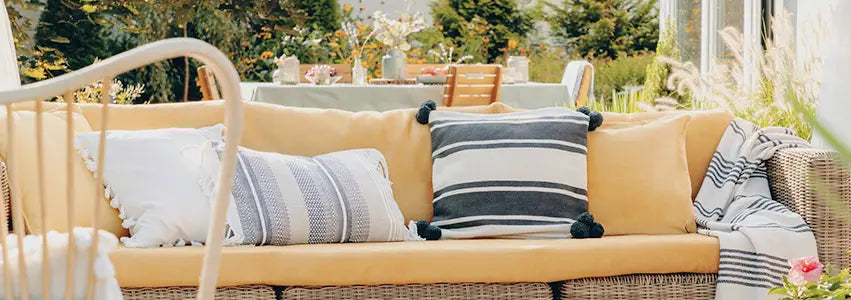
Cushion and Pillow
Routine care and maintenance are important to the life of all fabrics. Clean fabrics at the beginning of the season, at the end of the season, and after parties. Clean stains immediately. We recommend that you first spray off the stain with a garden hose which oftentimes will completely remove a fresh stain.
1. Sunbrella Fabric
Sunbrella fabrics have been tested thoroughly and are designed with the latest fabric innovations. They are water, mould, and mildew-resistant, easy to clean, UV-stabilised, and have high fade resistance.
Care & Cleaning
a. Prepare a solution of 1 cup of bleach and 1/4 cup of mild soap per gallon of water.
b. Spray the solution on the entire area and allow it to soak into the fabric for 15 minutes.
c. Clean the surface with a sponge, clean towel, or very soft-bristle brush.
d. Rinse thoroughly to remove all soap residue.
e. Allow the fabric to air dry.
By following these care guidelines, you can maintain the appearance and longevity of your Sunbrella fabrics.
2. Solution Dyed Acrylic
Acrylic fabrics are renowned for their exceptional weather resistance and colorfastness, making them ideal for prolonged outdoor use. To maintain their optimal condition, please follow these care guidelines:
a. Regular Cleaning: Gently remove surface dust and debris using a soft-bristle brush or vacuum cleaner.
b. Cleaning: For minor stains, prepare a cleaning solution by mixing neutral soap with warm water at approximately 37°C. Use a soft cloth or sponge to gently blot the stained area, working in a circular motion. Avoid using bleach or harsh chemicals to prevent fabric damage.
c. Rinsing and Drying: After cleaning, thoroughly rinse the pillow with clean water to remove any detergent residue. Gently squeeze out excess water without wringing to prevent fabric deformation. Allow the pillow to air dry naturally in a well-ventilated area, avoiding direct sunlight to prevent potential fading.
d. Ironing: Do not use high-temperature ironing, as excessive heat can cause discoloration or damage to the fabric. If necessary, use a low-temperature setting and place a protective cloth between the iron and the pillow fabric.
e. Mold Prevention: Although acrylic fabric is inherently resistant to mildew, ensure pillows are completely dry before use or storage, especially in high-humidity environments, to further inhibit mold growth.
f. Storage Recommendations: When not in use, store pillows in a dry, cool place. Avoid prolonged exposure to harsh weather conditions to extend their lifespan.
By adhering to these care practices, your acrylic fabric outdoor throw pillows will maintain their aesthetic appeal and durability, enhancing the comfort and charm of your outdoor spaces.
3. Olefin Fabric
Olefin is made from synthetic materials known as Polyolefin, which is resilient, colourfast, stain-resistant and durable.
The manufacturing process of Olefin is environmentally friendly, creates very little waste and the fibre is 100% recyclable
Care & Cleaning
a. Mix a solution of mild detergent and water.
b. Spray or gently scrub the affected area.
c. Rinse thoroughly with clean water.
d. If necessary, apply a laundry pre-wash product and leave on for 10 minutes before rinsing thoroughly.
By following these care guidelines, you can maintain the appearance and longevity of your olefin fabrics.
4. For Machine Washing.
The cushion covers are machine washable on gentle cycle, in cold water, with mild detergent. DO NOT PLACE IN DRYER. Allow your cushion covers to hang dry.
5. For inclement weather.
All Cushion fabrics are highly-resistant to water. However, heavy or consistent rainfall will still get your cushions wet. If your cushions do get wet, we recommend unzipping the cushions and propping them up to dry. Cushions will typically require 1-3 days in the sun to completely dry - though humidity and other weather conditions can extend this timeframe. Properly drying your cushions is essential for the longevity of the foam.

Mesh Sling Fabric
For basic maintenance, the sling fabric can be easily spot cleaned with warm water and mild soap.
For deep stains or messes, wipe off any excess with a clean cloth, spray a solution of 1 tbsp liquid detergent and 2 tbsp household bleach mixed with a gallon of water onto the dirty areas, let set for 2 minutes, scrub gently with a soft bristle brush, and rinse the mesh thoroughly with clean water to remove all soap residues.

Aluminum Furniture
For general cleaning, spray down the frame with a garden hose to remove loose dirt and debris. Avoid pressure washers, which can chip the powder-coated finish. For tougher stains, make a cleaning solution with mild detergent and warm water. Dip a sponge or lint-free rag into the solution and wring out excess. Gently wipe the entire surface, including underneath and in the corners. Rinse with water and allow to dry completely before using. Cover furniture when not in use and during inclement weather, such as with an All-Weather Cover, and store indoors during the off-season if possible.

Metal Furniture
Because most metals, except aluminum, are subject to rust, metal furniture is usually finished with layers of clear varnish, paint, or a durable powder coating. To clean, use a mild soap solution, scrub, rinse and dry. Avoid pressure washers, which can chip the powder-coated finish. On outdoor furniture, make sure to drain any water that may accumulate inside the frames after rinsing. After cleaning, apply a coat of quality liquid or paste wax with a lint-free cloth. Use a silicone spray to lubricate swivels and glides on chairs. If metal outdoor furniture is caught during a sudden rain storm, please make sure to drain any water that may have accumulated inside the frame and dry completely. Please always cover the furniture when not in use, and store properly during inclement weather and the winter/rainy seasons. On indoor furniture, do not use abrasives or products such as Brasso © as this may lead to the accidental removal of antique finishes and also to staining or damage to surrounding areas of fabric (IE Bed Buttons).

HDPE Wicker Furniture
Peak Home Furnishings patio furniture is handwoven from 100% high-density polyethylene (HDPE) wicker. HDPE possesses antimicrobial properties that inhibit fungus and mildew growth. That being said, even the most durable wicker should be cleaned periodically.
a. Remove all cushions.
b. Use a garden hose to completely wash down furniture. (If you do not have a garden hose available, wash with buckets of water.)
c. Mix together a cleaning solution using a mild soap and lukewarm water.
d. Using a soft bristle brush or sponge, gently clean the wicker. Try to get into the cracks between the weaves, as it helps immensely in loosening up dirt and grime.
e. Once you are done brushing or sponging the furniture, wash it down again with your garden hose or bucket of water until all soap residue is gone.
f. Let your patio set air dry. Kick back, relax and enjoy superior outdoor comfort!
Quick Dry Foam Padded
Quick Dry Foam is a reticulated (open-cell) foam material engineered for superior water drainage, durability, and comfort. It features a built-in fungicidal additive that inhibits the growth of mold and mildew, preventing stains and odors.
Regular Cleaning
- While this material features superior water drainage, we recommend regular vacuuming of furniture surfaces to remove dust and debris, thereby maintaining its optimal performance.
Drying
- After exposure to moisture, position the furniture to allow water to drain and air to circulate freely. Ensure dry completely before use.
Sintered Stone Furniture
Sintered stone tables are known for their durability and low maintenance. To keep
them looking their best, regular cleaning with a soft cloth and mild soap or a pH-neutral cleaner is usually sufficient. For tougher stains, avoid harsh chemicals and abrasive cleaners, opting for gentle solutions or specialized cleaners designed for sintered stone. While highly resistant to scratches and heat, using coasters and trivets, especially for hot items, is recommended to maintain the finish.
Faux Wood & Marble Furniture
We recommend dusting frequently with a clean, soft, dry, lint-free cloth. Wipe spills
immediately with a clean cloth. We do not recommend the use of aerosol-powered
cleaners, polishes that contain silicone, waxes, abrasives, or are oil-based. To avoid damaging the surface of the furniture, always use a cutting board when
cutting food or other items on the surface. Do not place hot items directly on the surface, always use pads or trivets to prevent damage.
Teak Furniture
Teak is tropical species of hardwood with high levels of rubber and oil content making it highly resistant to insects, bacteria (mold/mildew), and water/humidity penetration. It is a beautiful, natural product that historically has been used for marine applications, such as building ships, due to its highly resilient nature. It is one of the gold standards of outdoor materials.
Upon receiving your new teak furniture, we highly recommend wiping down the frames with a damp cloth to remove any dust resulting from the shipment of your order.
Because teak wood is a natural product each piece will have a unique and varied
appearance. Aging will vary based on climate and exposure, but over a period of roughly 8-12 months teak wood will age to a natural silver-gray color (patina). This is a purely aesthetic quality and has no impact on the longevity or integrity of the furniture. Should you want to maintain the beautiful, new look of your teak furniture, please see our Care and Maintenance recommendations below:
1. Use of Furniture
- Never place hot dishes directly on to the wood as they will mark the surface. Wipe up spills immediately as the oiled surface is more susceptible to stains than a lacquered finish and the wood will absorb moisture causing the grain to rise slightly.
- Take care when moving furniture and never drag pieces as this will cause damage to the joints.
2. Cleaning and Maintenance
- To maintain teak furnishings, use a soft bristled utility brush and stroke lightly in the direction of the arain to remove surface dust. For more stubborn dirt, the wood may be cleaned with a mild solution of laundry detergent or dish washing soap, then rinsed thoroughly and allowed to dry completely. Avoid the use of harsh cleaners and abrasives.
- If you wish to maintain the original color of the teak, you can apply a teak oil or sealer. Teak oils provide some UV protection; however it requires periodic refinish applications - once or twice per year depending on the amount of exposure to the sun. After sealing (covering) the furniture, bringing it indoors is still recommended during inclement weather or when not in use.
- The furniture will still turn gray over time which is normal. If you have a need to take gray untreated teak away and bring it back to its original color, a little sanding (with 240 grit sandpaper) will help. Once it is sanded smoothly, it leaves a little delicate grey to make semi rustic looking. And then reapply teak oil or just leave it as it is.
3. Storage and Long-Term Care
- If you want to store your furniture over the winter, it is recommended to store it in a garden shed, garage or basement. However do not move teak furniture from the garden straight into a heated room for storage, as the sharp change in temperature and humidity may cause the wood to split. Make sure furniture is completely dry before storage.
- Do not cover the wood with plastic, this can cause moldy. Cover furniture with outdoor covers (sold separately) when left outdoors during inclement weather or when not in use.
- Store cushions separately from furniture to prevent potential wet and deformation of cushions. After long use and/or if the wood gets dry, it can be necessary to retighten the screws (with moderate strength).
- Please use proper tools to retighten the screws. The stain and discolor should be almost prevented if customer follow the process to regularly maintain furniture.
Polyester Rope Furniture
To remove dirt and debris, vacuum with a dust- brush attachment or use soft bristle
brush. Clean with a mild soap solution, scrub with a sponge or soft bristle brush, rinse with cold water and dry completely. Avoid sitting on the rope when still damp, which can cause the rope to sag or stretch. If rope furniture is caught during a sudden rainstorm, please make sure to drain any water that may have accumulated inside the frame and dry completely. Please always cover the furniture when not in use, and store properly during inclement weather and the winter/rainy seasons.
Patio Umbrella
Cleaning the canopy regularly will keep it looking fresh, which can be done without removing it from the frame. To clean, wet the dirty area with mild detergent and use a soft brush. Rinse with water and allow to air dry. To protect the life of the umbrella, remember to close the canopy when not in use, or in inclement weather.
Pergola & Gazebo
Investing in a pergola & gazebo enhances your outdoor space's value and aesthetics. Proper care and maintenance ensure its longevity and functionality across all seasons. Below is a comprehensive guide to help you maintain your pergola & gazebo in optimal condition.
Regular Inspections
a. Frequency: Conduct inspections several times a year.
b. Structural Check: Examine seams, joints, and tracks for signs of wear, rust, or corrosion. Addressing these issues promptly maintains the structural integrity.
c. Debris Removal: Clear accumulated debris such as twigs and leaves, especially from roof slats, to prevent operational hindrances.
d. Vegetation Control: Trim nearby vines and bushes to prevent potential damage to the pergola structure.
Cleaning Procedures
a. Initial Rinse: Use a hose or bucket to remove loose dirt from the surface.
b. Gutter and Slat Cleaning: Inspect and clear gutters and roof slats of dirt buildup, then flush with water to ensure thorough cleaning.
c. Mild Detergent Wash: Prepare a solution of warm water mixed with a small amount of mild detergent. Avoid harsh chemicals that can strip protective coatings.
d. Gentle Scrubbing: Using a soft-bristled brush or sponge, gently clean the structure following the grain to prevent scratches.
e. Thorough Rinse: After cleaning, rinse all soap residues with clean water.
f. Drying: Wipe down the pergola with a microfiber cloth or towel to prevent water spots and streaks.
Cleaning Frequency Based on Environment
a. Urban Areas: Clean every three months.
b. Rural Areas: Clean every six months.
c. Industrial and Marine Environments (within 1 km of the sea): Perform monthly cold-water washes and biannual warm water with detergent washes.
Accessory Maintenance
a. Privacy Screens: Wipe visible dirt with a damp sponge. Avoid harsh chemicals to prevent material damage. Allow to air dry after cleaning.
b. Curtain: Clean with warm soapy water and a cloth, rinse with clean water, and let air dry.
c. Curtain Track: Regularly inspect tracks to prevent dust and dirt buildup; use a handheld vacuum if necessary.
Retractable Curtain & Canopy Usage
a. Storage Position: Keep retractable curtain or canopy close when not in use.
b. Wind Protection: Leaving curtain or canopy open during high winds can cause damage, which may not be covered under repair warranties.
Coastal Customers
Due to the corrosive nature of salt, extra care must be taken due to the higher salinity in the air as well as the possibility of direct contact from sea spray. Keep outdoor metal/wicker furniture covered when not in use, and rinse with fresh water on a regular basis to prevent salt accumulation. Make sure to drain any water that may accumulate inside the frames after rinsing.
Outdoor FurnitureStorage
We highly recommend storing any outdoor furniture during the winter/rainy seasons. Before storing your furniture, please ensure all moisture collected in the frame tubes has been drained and wipe dry. When outdoor furniture is not in use, we recommend covering all the furniture to protect it against the elements. If outdoor furniture is caught during a sudden rain storm, please make sure to drain any water that may have accumulated inside the frame and wipe dry.

